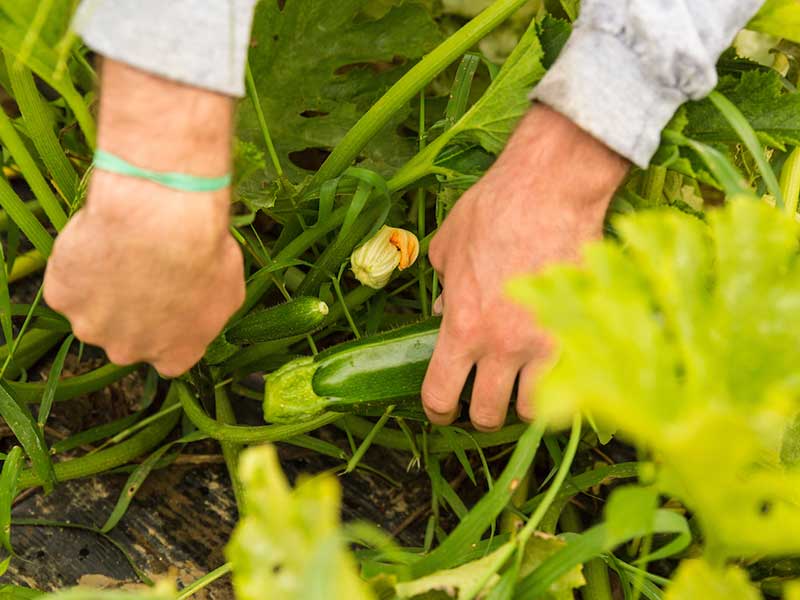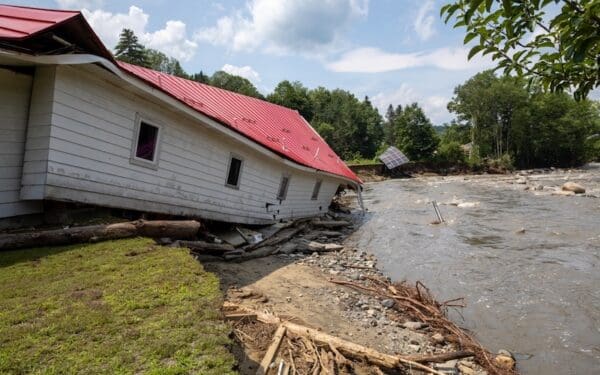
Regenerative agriculture creates healthy food, healthy soil, and a healthier climate. But making the switch isn't easy. Policymakers must take steps to help. Photo: Ecophotography
Just over 10 years ago, Tropical Storm Irene ravaged Vermont. Streets and bridges washed out and homes flooded as rivers overflowed their banks. The storm proved especially devastating for the state’s farmers, who lost entire crops to submerged fields. Meanwhile, as those flood waters receded, they carried fertilizer, manure, and other pollution into our lakes, rivers, and streams.
That storm prompted many New England farmers to re-examine how they farm. Since then, many have adopted a holistic approach to farming known as regenerative agriculture. Now, despite the increasingly intense and frequent rainstorms that have drenched Vermont since Irene, these farmers feel optimistic. They hope their changes have better prepared their farms to withstand flooding and other extreme weather in the future.
Regenerative agriculture, rooted in Indigenous knowledge, doesn’t just help a farm bounce back from climate impacts, however. It could also help lower the region’s climate-damaging emissions if embraced widely across New England.
Just what is regenerative agriculture – and how do we make it easier for New England’s farmers to adopt it?
The Basics of Regenerative Agriculture
Regenerative farmers use their experience and local knowledge to build healthy soils, increase biodiversity, and restore their land’s fertility. They do this by carefully selecting practices and crop rotations that respond to their fields’ needs. The end result is healthier, more resilient farmland that produces wholesome food and high-quality fiber.
That contrasts with chemical agriculture, which has become the norm across much of the country. Chemical agriculture asserts that farmers can overcome unhealthy soils and damaged ecosystems with industrial pesticides, chemical fertilizers, and GMOs. According to Big Agriculture, the same practices and chemicals suit all farmers, whether they live in Springfield, Missouri, or Springfield, Vermont.
Regenerative farmers favor practices that keep the soil covered year-round, reduce disruptions to soil, and involve a wide variety of plants and livestock. These practices also cut the number of chemicals applied to crops.
These practices have been shown to increase productivity and improve the overall resilience of crops and farms. They also improve the health of the soil and environment. But they have benefits beyond the farm, too.
Suppose more farmers in New England (and beyond) adopt regenerative agriculture. In that case, they will likely help cut the amount of carbon released into the air since soil releases carbon every time it is disturbed. That could both lower climate-damaging emissions and store carbon in the soil.
What’s more, regenerative farms also result in cleaner water and less exposure for farmers and farmworkers to dangerous chemicals.
Farmers Need Support to Make Their Farms More Regenerative
New England’s farmers are already bearing the brunt of the impacts of the climate emergency. Droughts, floods, and other extreme weather make it harder for farmers to produce the food and fiber on which we depend.
That’s why many farmers in our region and across the country are eager to make their farms more regenerative. They often face barriers, however, including financial and operational challenges. For example, equipment that makes regenerative farming easier can be expensive. Also, farmers currently have limited access to the technical experts and experienced farmers who can help them plan a more regenerative operation.
State policymakers have tools to help our local farmers adopt regenerative methods. These tools include:
- Ending support for extractive industrial farming practices that harm our environment, farmers, and farmworkers. Current policies and subsidy programs favor factory farms, using pesticides and chemical fertilizers, and planting commodity crops like corn and soybeans instead of fruits and vegetables. Ending support for these destructive practices will send a clear signal that the future of farming is regenerative.
- Providing financial assistance to farmers who are shifting to more sustainable practices. We know that many farmers want to use regenerative methods but can’t yet afford to. Farming regeneratively is less expensive than depending on costly pesticides, chemical fertilizers, and GMO seeds, but transitioning can be difficult. Policymakers can make it easier for farmers to purchase necessary equipment and gain the training they need to make that transition.
- Incentivizing more holistic, long-term solutions. Our farmers are stewards of our working lands and can play a vital role in helping lower the carbon pollution that is suffocating our planet. But right now, their livelihoods are at risk from the very farming practices our current policies favor. State leaders must adopt policies emphasizing regenerative agriculture as the new normal – a long-term, sustainable solution that benefits farmers, our local environment, and our global climate.
CLF partnered with American Farmland Trust (AFT) to look at the environmental and climate benefits that regenerative agriculture can have in New England. The results are promising. With better management, New England’s farmland can help combat the climate crisis. Policymakers must reduce the challenges farmers face in making these changes. You can read CLF’s policy recommendations for making that happen here.



